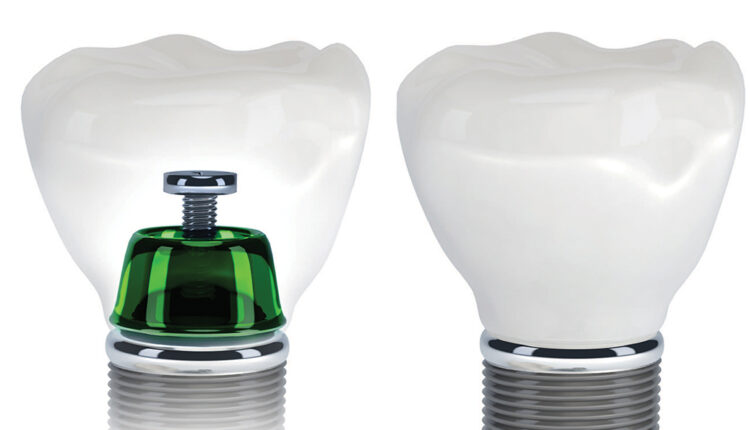
Implant Therapy — The European Perspective
Iain Chapple, PhD, BDS, FDSRCPS, FDSRCS, CCST (Rest Dent), shares the European Federation of Periodontology’s perspective on ensuring implant success.
While there is universal focus on prevention and recognition of the need to treat peri-implant disease in its earliest stages, clinicians in the United States and Europe may take different approaches to therapy. In this Q&A, Iain Chapple, PhD, BDS, FDSRCPS, FDSRCS, CCST (Rest Dent), discusses the European Federation of Periodontology’s (EFP) Perio Prevention Workshop guidelines for addressing periimplant disease.
What treatment does the EFP recommend for peri-implant mucositis?
The evidence base for managing peri-implant mucositis is immature, and study results should be interpreted with caution. There is no gold standard, but patient-administered daily mechanical biofilm control, with or without chlorhexidine gel (which is not available in the U.S.), has shown promising results.1 Professional involvement is typically essential, and should include personalized oral hygiene instruction, professional monitoring of self-care, and in-office mechanical debridement.
Although various hand or powered instruments and/or polishing tools are used for debridement, there is no consensus on what is most effective. While studies suggest debridement reduces clinical signs of inflammation, complete resolution of bleeding on probing is not always achieved.2,3 So far, adjunctive measures (such as air polishing devices, antiseptics, and local and systemic antibiotics) have not been found to dependably reduce clinical signs of inflammation. That said, it is important to note that lack of supportive evidence does not disprove the effectiveness of well-reasoned clinical tactics. In other words, first use approaches for which evidence exists, and, if unsuccessful, consider other approaches that may help on a site-by-site basis.
When a clinician detects inflammation around an implant with slightly increased pocket depths, but no signs of suppuration, discomfort or bone loss, what treatment does the EFP recommend?
Peri-implantitis is defined as an implant site with bleeding and/or suppuration, plus 1 mm or greater increase in bone loss after the first year of implant placement.4 The EFP workshop dealt with primary prevention, and thus focused on managing peri-implant mucositis. As noted, and based on previous workshops, it is clear there is no gold standard for managing peri-implant mucositis. For slightly increased pocket depths, but no suppuration or bone loss, the diagnosis is periimplant mucositis, which should be managed as described in the previous answer. In shallow pockets, subgingival prophylaxis for biofilm removal will likely suffice.
At which point is surgical intervention indicated?
The choice of surgical intervention or nonsurgical management will depend on many factors, including the amount of bone loss, patient compliance with hygiene protocols (if oral hygiene remains poor, palliative nonsurgical management may be the best option), adjacent tissue health, medical and financial considerations, and perhaps even a patient’s age and frailty.
First use approaches for which evidence exists … if unsuccessful, consider other approaches that may help on a site-by-site basis
Essentially, the criteria for surgical intervention are similar to those for chronic periodontitis — that is, circumstances that bode poorly for long-term success. These include consistent bleeding on probing, increasing pocket depths, suppuration and bone loss. Generally, surgical management may lead to healing through bone formation onto the implant, but this may not be reosseointegration. Successful nonsurgical management leads to a healthy epithelial attachment to the implant surface. Ideally, if the case is amenable to surgery, disinfection and regenerative surgery with bone substitutes and membranes — including complete burial of the implant for three to four months — give the implant the best chance for recovery. This is costly in terms of fees and time, however, and typically requires special expertise and referral. Furthermore, if many implant threads are exposed, these efforts are unlikely to succeed. Meticulous biofilm control via an effective self-care regimen is essential for sustainable success.
What constitutes an adequate zone of attached keratinized gingiva around an implant?
It is generally accepted that keratinized tissue around the implant is more desirable than nonkeratinized tissue, and many clinicians will graft a recipient site prior to implant placement in order to create a keratinized tissue cuff around the implant. That noted, many patients with meticulous oral hygiene can maintain implant health when there is a nonkeratinized tissue margin. The decision to manage nonkeratinized marginal tissue should be clinical and based on the presence or lack of inflammation.
Should soft tissue grafting be recommended when there is less than a minimum amount of tissue?
If inflammation is present and a lack of keratinized tissue is considered potentially etiological, the patient should be referred for an opinion about grafting. If the patient is coping and there is no bone loss, suppuration or bleeding on probing, surgery is not indicated.
From your perspective, are implants a viable therapeutic approach for patients who smoke?
Evidence that smoking is a modifiable risk factor for implant failure is consistent and convincing. I do not believe implants should be placed in smokers, unless these patients are fully aware and accept the increased likelihood of implant failure.5 This is part of the informed consent process.
REFERENCES
- Spivakovsky S, Keenan A. The effect of anti-plaque agents on gingivitis. Evid Based Dent. 2016;17:48–49.
- Krishna R, De Stefano JA. Ultrasonic vs. hand instrumentation in periodontal therapy: clinical outcomes. Periodontol 2000. 2016;71:113–127.
- Heitz-Mayfield LJ, Lang NP. Surgical and nonsurgical periodontal therapy. Learned and unlearned concepts. Periodontol 2000. 2013;62:218–231.
- Sanz M, Chapple IL, Derks J. Clinical research on peri-implant diseases: consensus report of Working Group 4. J Clin Periodontol. 2012;39:202–206.
- Chrcanovic BR, Kisch J, Albrektsson T, Wennerberg A. Factors influencing early dental implant failures. J Dent Res. 2016;95:995–1002.
Featured photo courtesy of DMITRY EKIMOVSKY/ISTOCK
From Decisions in Dentistry. November 2016;2(11): 24-25.


